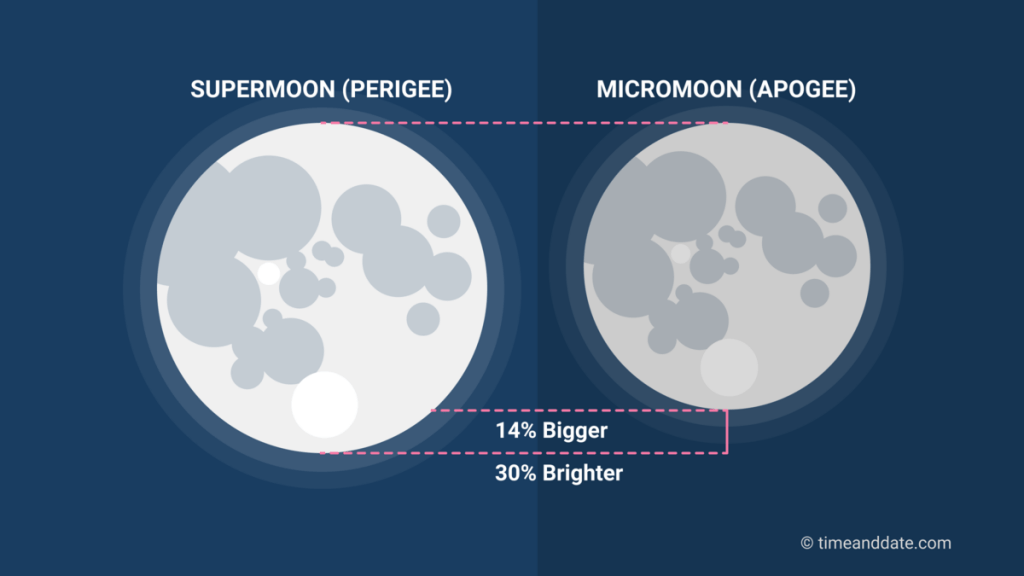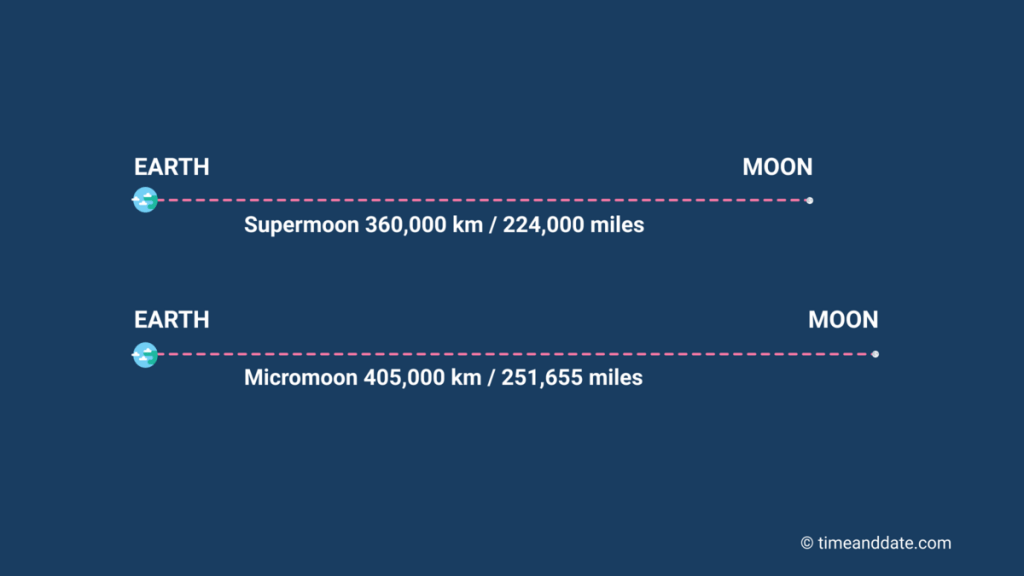On July 13th, 2022 – look up! The Full Buck Moon will be illuminating Trinidad and Tobago’s night skies. It will appear bigger and brighter than a normal full moon, making it a supermoon by most known definitions.
Depending on which supermoon definition you follow, July 13th’s moon will be the third of four consecutive supermoons that you can see through the Northern Hemisphere Summer, which began on June 21st. The next full moon after next week will be August 11th.
The July 2022 Super Moon
Supermoons occur annually. It is not a harbinger of natural disasters or the end of the world but part of the moon’s orbit around Earth.
What makes this moon ‘Super?’

The moon has an elliptical orbit around Earth in the same way that the Earth has an elliptical orbit around the Sun. This results in a point in its orbit where the moon will be closest to (perigee) and furthest away (apogee) from the Earth.
During a Supermoon, which is not a scientific term, a perigee-syzygy occurs – meaning that the Earth, Sun, and Moon are all in alignment.

What’s the definition of a supermoon? TimeandDate.com says, “There are no official rules for how close or far the moon must be to qualify as a supermoon or a micro moon. Different outlets use different definitions. Their definition is a “supermoon is designated when the Moon is less than 360,000 kilometers away from the center of the Earth and appears about 7% brighter than an average full Moon.” Due to this, a full moon classified as a supermoon by one source may not qualify as a super full moon by another.
Based on that definition, the only two visible supermoons of 2022 would be June’s and July’s. Here are the distances (as measured between the centers of the moon and Earth) for the three upcoming full moons:
- June 14th: 222,238 miles (357,658 km)
- July 13th: 222,089 miles (357,418 km)
- August 12th: 224,569 miles (361,409 km)
Supermoons can be both full moons (visible), such as the July and July supermoons, and new moons (unable to see from Earth). These Super new moons occurred/will occur on January 2nd and December 23rd, 2022.
What does a “Buck Moon” mean?
The Names Of The Moon
When is the best time to view the Supermoon?
The best time to enjoy a Super Full Moon or any other Full Moon is just after moonrise when the moon is close to the horizon. Just before moonset is also a good time.
When the moon rises, it does so a delicate orange, which turns to yellow, and then, as it rises higher into the sky, it becomes a bright, white orb that’s impossible to look at without hurting your eyes.
It also looks bigger than when it is high in the sky because the human brain perceives things larger when they are surrounded by other objects, such as trees, buildings, and mountains.
This is called the Moon illusion and actually makes more of a difference to what it looks like than the real boost you get from it being a bit closer to Earth.
On July 13th, moonrise is expected at 6:47 PM towards the east-southeast. There is some good weather news for once! Very dry air is forecast to be present across Trinidad and Tobago Wednesday night, which will limit cloudiness and hinder shower development. The only obscurity will be moderate levels of Saharan Dust.
King Tides Ongoing
With every full moon, we get spring tides. During spring tides, the tidal range is larger than normal. This means there are higher than average high tides and lower than average low tides occur.
However, with every Supermoon, we can get a phenomenon called King Tides, or Perigean spring tides. During king tides, the tidal range is even higher than usual, with higher high tides and lower low tides than usual. King Tides are set to end on Saturday, July 16th, 2022. These elevated tides will slow runoff from rainfall, mainly during high-tide periods.
This can be particularly hazardous to coastal communities that suffer from coastal flooding, particularly if it coincides with a hazardous seas event.
If you’d like your picture to be featured, feel free to send us or tag us on our social media pages: Facebook, Twitter, Instagram, and e-mail.










